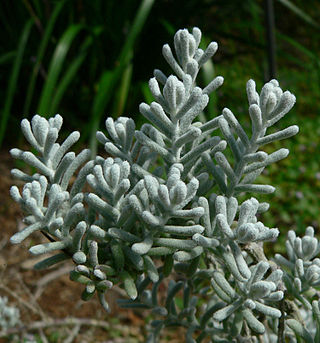
Maireana sedifolia, also known as the bluebush or pearl bluebrush is a compact shrub endemic to Australia, and found in New South Wales, Victoria, South Australia, Western Australia, and the Northern Territory. It is used in pasture and as a garden plant where it is popular due to its distinctive grey foliage.
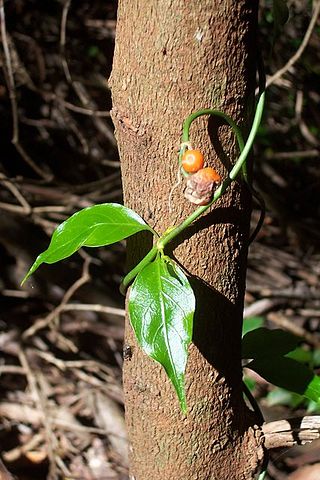
Morinda jasminoides, known as the sweet morinda or jasmine morinda, is a common climber growing in eucalyptus forests and rainforests of eastern Australia. There is a record of this plant in the far north of Western Australia.
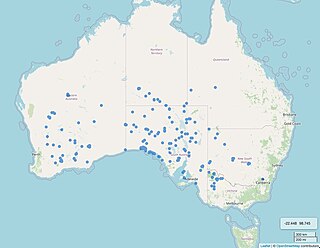
Kippistia is a genus of flowering plants in the family Asteraceae. The name commemorates Richard Kippist, librarian to the Linnean Society.

Polycalymma stuartii, the poached egg daisy, is an Australian daisy found abundantly on sand plains and dunefields. Its common name is derived from the poached egg-like appearance of its white flower and yellow centre. It is the only known species of the genus Polycalymma; a member of the tribe Gnaphalieae within the family Asteraceae.
Dodonaea petiolaris is a shrub species in the genus Dodonaea found in Australia.
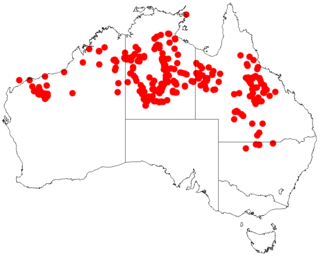
Acacia cowleana, Halls Creek wattle, is a northern Australian native shrub. It is a flowering plant with yellow flowers that only open in winter. Its origin is the Northern Australia's dry tropics. It belongs to the genus of Acacia.
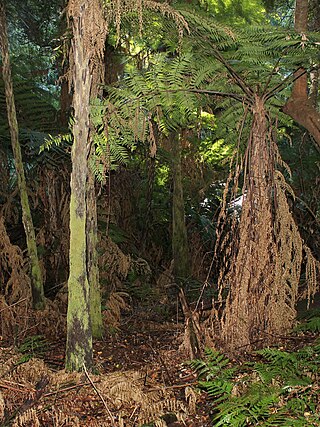
Sphaeropteris australis, synonyms Alsophila leichhardtiana and Cyathea leichhardtiana, the prickly tree fern, is a plant in the tree fern family, Cyatheaceae. It is native to eastern Australia. It is a common species found in moist situations, in and near rainforests.

Isotoma petraea, commonly known as rock isotome, is a small, herbaceous plant in the family Campanulaceae occurring in arid regions of Australia. It has single, purplish-blue flowers on smooth, slender branches from February to November.
Calotis cymbacantha, the showy burr daisy, is a species of Calotis native to the arid areas of Australia. It is a perennial herb that grows between 10 and 40 cm tall. It has hairy erect stems which are woody at the base and produces yellow flowers.

Hypericum japonicum, known as matted St. John's-wort, is an annual herbaceous flowering plant in the St. John's wort family Hypericaceae, in Hypericum sect. Trigynobrathys.

Abutilon oxycarpum, known as flannel weed, straggly lantern-bush, and small-leaved abutilon, is a malvaceous plant native to eastern Australia. It is found on hillsides or floodplains on red sand and limestone.

Atriplex holocarpa is a low-growing species of Atriplex (saltbush) found throughout arid regions of Australia. A. holocarpa is commonly known as pop saltbush, because its carpals pop when stepped upon.
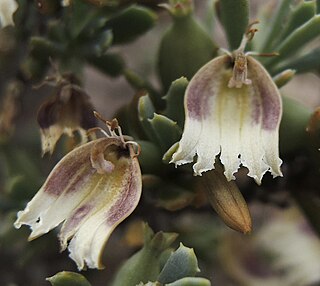
Scaevola collaris is a shrub in the family Goodeniaceae and its native range is five mainland states/territories of Australia: the Northern Territory, New South Wales, South Australia, Queensland and Western Australia.

Xanthosia atkinsoniana, is a small herb in the family Apiaceae. It grows in both New South Wales and Western Australia.

Dicrastylis lewellinii is a species of plant within the genus, Dicrastylis, in the family Lamiaceae. It is found in Western Australia, the Northern Territory, New South Wales, Queensland and South Australia.

Codonocarpus cotinifolius a tall shrub or tree in the Gyrostemonaceae family is a found in all mainland states of Australia, including Victoria, and is widespread in arid areas. It is suspected of being toxic to stock.

Macgregoria racemigera is a small plant in the family Celastraceae) found in inland Australia from New South Wales through Queensland, the Northern Territory to Western Australia, and South Australia.

Hybanthus floribundus is a plant in the Violaceae family, found in southern Western Australia, southern South Australia, Victoria and southern New South Wales.
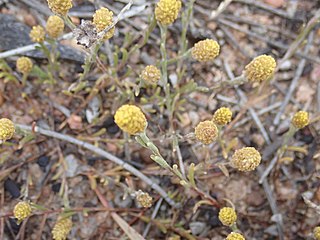
Calocephalus sonderi is a plant in the family Asteraceae, found in South Australia, Victoria, Queensland and New South Wales.
Cratystylis conocephala, the blue bush daisy, blue bush, grey bush, and round leaved greybush, is a species of flowering plant in the family Asteraceae, native to southeast Western Australia, South Australia, New South Wales, and Victoria. It is a densely branched, spreading shrub. The species is listed as endangered in New South Wales and critically endangered in Victoria.

















